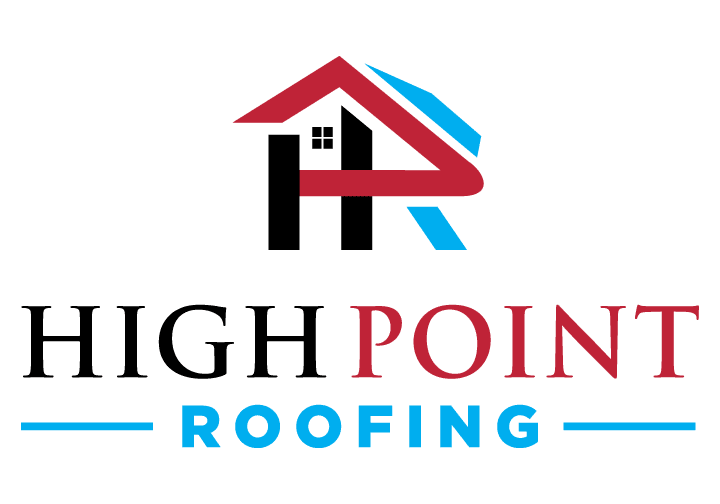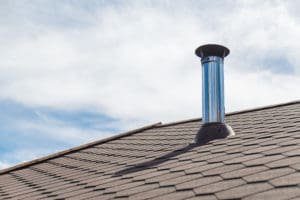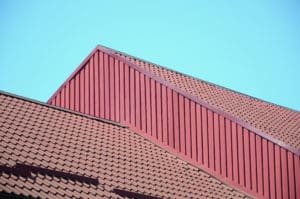Having a well-maintained roof is crucial for the overall integrity and safety of your home. However, many homeowners are unaware of the signs that indicate something is wrong with their roof until it becomes a major issue. In this article, we will explore the easy ways to identify potential problems with your roof and take the necessary steps to address them promptly.
Understanding the Basics of Roof Structure
Before we delve into the signs of roof damage, it’s essential to have a basic understanding of your roof’s structure. A roof consists of various components that work together to protect your home from the elements. These components include the roof deck, underlayment, shingles or other roofing materials, flashing, vents, and gutters.
Each component plays a significant role in safeguarding your home against moisture, wind, and other potential threats. Understanding how each part functions will help you identify any issues that arise and determine the appropriate course of action.
Key Components of a Roof
The roof deck is the base layer of your roof, typically made of plywood or oriented strand board (OSB). It provides structural support and stability to the entire roofing system.
The underlayment is a protective membrane installed directly over the roof deck. It acts as a secondary barrier against water infiltration and helps to extend the lifespan of the roofing materials.
Roofing materials, such as shingles, tiles, or metal panels, are the visible outermost layer. They provide weather resistance and aesthetic appeal to your roof.
Flashing is a metal or rubber material used to seal joints and transitions on the roof, preventing water from entering these vulnerable areas.
Vents are designed to provide proper ventilation, allowing fresh air to flow in and hot air to escape, reducing heat and moisture buildup in the attic.
Gutters and downspouts collect and divert rainwater away from the roof, protecting the roof and foundation from water damage.
The Role of Each Component
The roof deck acts as a foundation for the entire roofing system. It should be free of rot, sagging, or other structural damage that could compromise the integrity of the roof.
The underlayment acts as a barrier against moisture, preventing water from seeping into the roof deck and causing rot or mold growth.
Roofing materials should be securely fastened, free of cracks, missing pieces, or signs of wear that could lead to leaks.
Flashing should be properly installed around chimneys, vents, skylights, and other areas where the roof intersects with vertical structures or changes in slope.
Vents help regulate temperature and moisture levels in the attic, preventing issues like condensation, mold growth, and premature deterioration of the roof deck.
Gutters and downspouts should be clean and free of blockages, allowing water to flow easily and prevent water from pooling on the roof or near the foundation.
Now that you have a better understanding of the key components of a roof and their roles, let’s dive deeper into the fascinating world of roofing materials. From traditional asphalt shingles to eco-friendly options like metal roofing, there are various choices available to suit your preferences and needs. Each material has its unique advantages and considerations, such as durability, energy efficiency, and aesthetic appeal.
Additionally, it’s worth exploring the different types of flashing available in the market. While metal flashing is commonly used due to its durability and weather resistance, rubber flashing has gained popularity for its flexibility and ease of installation. Understanding the pros and cons of each type can help you make an informed decision when it comes to protecting your roof from potential leaks and water damage.
Common Signs of Roof Damage

Now that you understand the key components of a roof, it’s time to explore the common signs that indicate potential roof damage. By recognizing these signs early on, you can prevent further deterioration and costly repairs.
Roof damage can manifest in various ways, and being vigilant about spotting these signs can save you from major headaches down the road. In addition to the key indicators mentioned earlier, there are other subtle signs to watch out for that could signal potential issues with your roof.
Visible Exterior Damage
One of the easiest ways to identify roof damage is by thoroughly inspecting the exterior of your home. Look for missing, cracked, or curling shingles, as well as any signs of granule loss. Damaged or deteriorating flashing around chimneys, vents, or skylights can also indicate potential issues.
Moreover, keep an eye out for any signs of rust on metal elements of the roof, such as gutters or flashing. Rust can weaken these components and compromise the integrity of your roof over time. Additionally, be mindful of any vegetation growing out of gutters or on the roof itself, as this can trap moisture and lead to deterioration.
Interior Indicators of Roof Problems
While exterior signs are more apparent, interior indicators shouldn’t be overlooked. Water stains or discoloration on ceilings and walls are clear indications of roof leaks. Peeling paint or wallpaper, as well as mold or mildew growth, can also suggest water intrusion from a damaged roof.
When inspecting your attic, look for signs of moisture, such as damp insulation or water droplets. Furthermore, sunlight penetrating through the roof deck or visible gaps in the attic insulation can be signs of roof damage.
Remember, regular maintenance and timely repairs are key to extending the lifespan of your roof and ensuring the protection of your home. By staying proactive and addressing any signs of damage promptly, you can avoid costly repairs and maintain a secure and durable roof for years to come.
The Impact of Weather on Your Roof

Weather conditions play a significant role in the deterioration of your roof over time. Understanding how different weather elements affect your roof will help you identify potential issues and take appropriate preventive measures.
From scorching summers to freezing winters, your roof withstands a variety of weather conditions throughout the year. Each season brings its own set of challenges that can impact the longevity and performance of your roof.
Effects of Sun and Heat
Prolonged exposure to the sun’s UV rays can cause shingles to deteriorate and lose their protective granules, leading to premature aging and potential leaks. Additionally, extreme heat can cause the roofing materials to expand and contract, compromising their integrity over time.
As the sun beats down on your roof, it’s essential to be proactive in protecting it from sun damage. Consider applying a UV-resistant coating to extend the lifespan of your shingles and enhance their durability against harsh sunlight.
Regularly inspect your roof for signs of sun damage, such as faded or discolored shingles, blistering, or cracking. Consider using reflective or heat-resistant roofing materials to mitigate the impact of sun and heat.
Damage from Rain and Snow
Moisture is one of the main culprits behind roof damage. Heavy rain and snowfall can put a strain on your roof, leading to water infiltration and potential leaks. Additionally, ice dams can form along the roof edges, causing water to back up and seep beneath the shingles.
During the rainy season, ensure that your roof is equipped to handle excess water. Check for any signs of water stains on the ceiling or walls, as they could indicate a leak in the roof. Proper attic ventilation is crucial in preventing moisture buildup and mold growth in your home.
Regularly clean the gutters and downspouts to ensure proper water drainage. Inspect the roof for damaged or missing shingles, as well as signs of water pooling or excessive moisture in the attic.
Age-Related Roof Issues

As your roof ages, it becomes more susceptible to wear and tear. Understanding the expected lifespan of different roofing materials will aid in assessing the condition and planning for necessary repairs or replacement.
Roofs are a critical component of any building, providing protection from the elements and ensuring the structural integrity of the property. As such, it is essential to be proactive in maintaining and monitoring the health of your roof to avoid costly repairs or premature replacement.
Lifespan of Different Roofing Materials
The lifespan of your roof depends on the type of materials used. Asphalt shingle roofs typically last between 20 to 30 years, while metal roofs can endure for 40 to 70 years. Tile, slate, or concrete roofs have the longest lifespan, ranging from 50 to over 100 years.
Factors such as climate, installation quality, and maintenance routines can also influence the longevity of your roof. For example, roofs in areas prone to severe weather conditions may require more frequent inspections and repairs to ensure their durability over time.
Keep track of your roof’s installation date and consult a professional if your roof approaches the end of its expected lifespan. Conduct regular inspections and maintenance to ensure its longevity.
Wear and Tear Over Time
Over time, your roof may experience general wear and tear. This can include shingle deterioration, cracked flashing, or compromised ventilation. Regularly inspect your roof for signs of aging, such as missing or loose shingles, cracked caulking, or worn-out flashing.
Addressing these issues promptly can prevent further damage and extend the lifespan of your roof. Consider scheduling regular professional inspections to catch any potential problems early on.
Additionally, keeping your gutters clean and free of debris is crucial in maintaining the health of your roof. Clogged gutters can lead to water backup, causing damage to your roof and potentially compromising its structural integrity. Regularly clearing out leaves, branches, and other debris from your gutters can prevent water-related issues and prolong the lifespan of your roof.
Preventative Measures for Roof Maintenance

Maintaining a healthy roof requires proactive measures to prevent damage and preserve its integrity. Implementing the following preventative measures will help prolong the life of your roof and save you from costly repairs in the future.
Roofs are a critical component of any building, providing protection from the elements and maintaining the structural integrity of the property. Regular maintenance is key to ensuring your roof remains in optimal condition throughout its lifespan.
Regular Roof Inspections
Perform regular visual inspections of your roof, both from the exterior and interior. Look for signs of damage or wear, such as missing shingles, cracked flashing, or signs of leaks. Pay attention to any changes in the roof’s appearance or sudden increases in your energy bills.
Consider hiring a professional roofing contractor who can perform a comprehensive inspection and identify potential problems that may not be visible to the untrained eye. These professionals have the expertise and tools to detect early warning signs of roof damage and address them before they escalate into more significant issues.
Importance of Timely Repairs
If you notice any signs of roof damage or suspect an issue, it’s crucial to address it promptly. Ignoring small problems can lead to more extensive and expensive repairs in the future. Consult a professional roofer to assess the situation and recommend the appropriate course of action.
Remember, preventing roof damage is far more cost-effective than dealing with the consequences of a neglected roof. By staying proactive and addressing issues promptly, you can extend the lifespan of your roof and ensure the safety and comfort of your property for years to come.
Conclusion
Your roof plays a critical role in protecting your home from various weather conditions. By understanding the basics of roof structure, recognizing common signs of damage, and implementing preventive measures, you can ensure your roof remains in optimal condition for years to come. Regular inspections, timely repairs, and ongoing maintenance will help you avoid costly roof replacements and maintain the structural integrity of your home.





